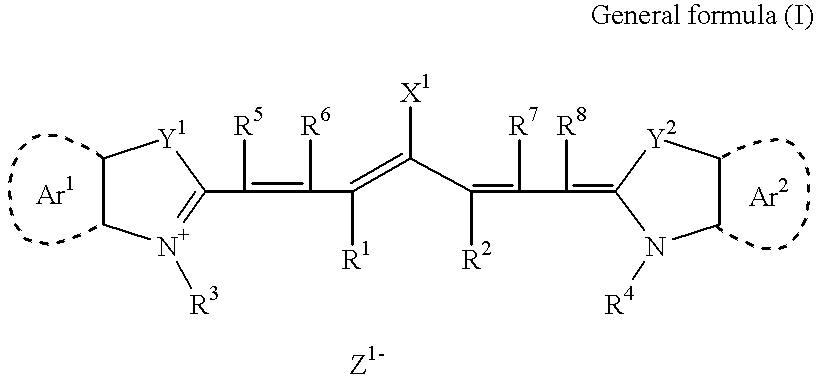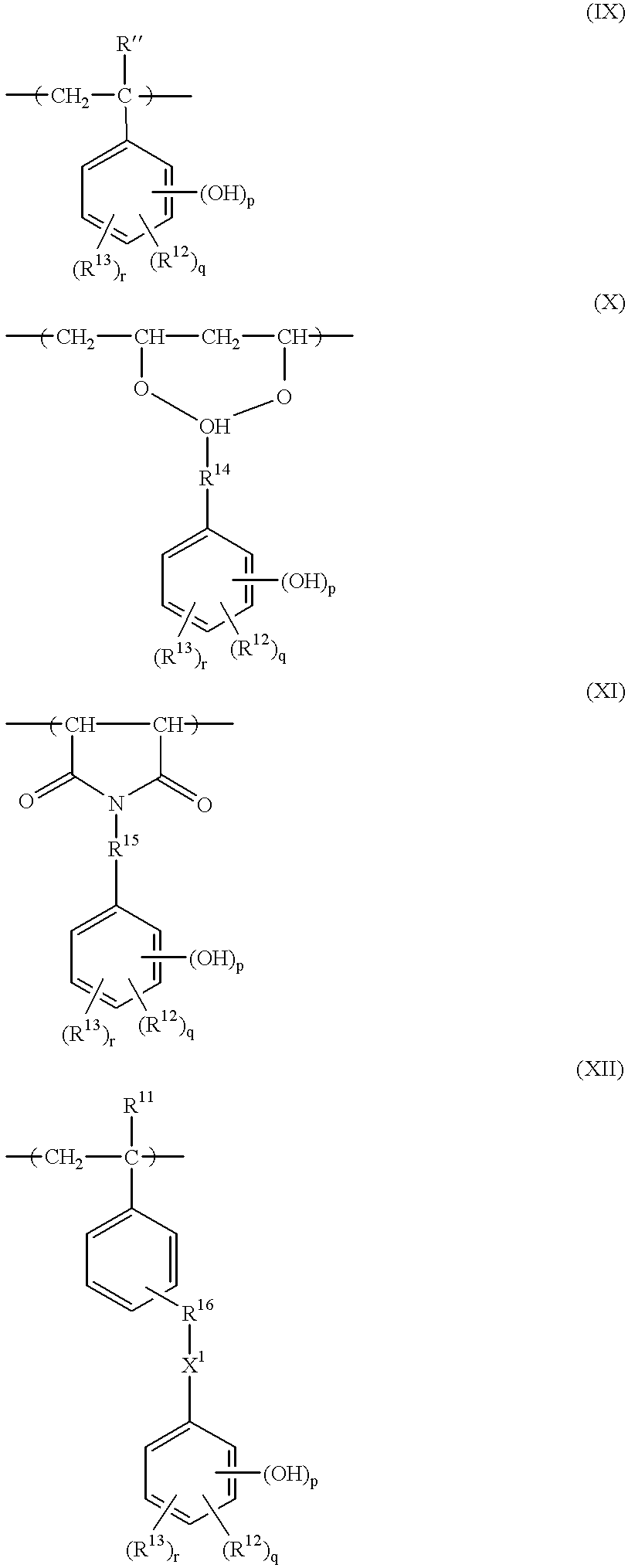Planographic printing plate and method of producing the same
a technology of printing plate and planogram, which is applied in thermography, instruments, photosensitive materials, etc., can solve the problems of high film hardness, high film hardness, and contamination of laser exposure apparatus and light sour
- Summary
- Abstract
- Description
- Claims
- Application Information
AI Technical Summary
Benefits of technology
Problems solved by technology
Method used
Image
Examples
example 1
[0214] Production of Substrate
[0215] An aluminum alloy plate (thickness: 0.30 mm) containing 99.5% or more of aluminum, 0.30% of Fe, 0.10% of Si, 0.02% of Ti and 0.013% of Cu was de-greased by washing with trichloroethylene, the surface of which was sand-blasted, and washed sufficiently with water.
[0216] This aluminum plate was immersed in a 25% sodium hydroxide aqueous solution (45.degree. C.) for 9 seconds for etching, washed with water, then, further immersed in a 2% HNO.sub.3 aqueous solution for 20 seconds and washed with water. The amount of etching of the sand-blasted surface at this point was about 3 g / m.sup.2.
[0217] Then, a direct current anodized film of 3 g / m.sup.2 was provided on the above-mentioned aluminum plate using 7% sulfuric acid as an electrolyte solution, at a current density of 15 A / dm.sup.2, and further washed and dried, then, the following application solution for a primer layer was applied thereon, and dried under an atmosphere of 80.degree. C. for 30 second...
example 2
[0253] Production of Substrate
[0254] A molten bath of an aluminum alloy containing 99.5% or more of aluminum, 0.30% of Fe, 0.10% of Si, 0.02% of Ti and 0.013% of Cu was subjected to purification treatment and molded. For the purification, de-gassing treatment was effected and ceramic tube filter treatment was conducted for removing unnecessary gases such as hydrogen and the like in the molded bath. The molding was effected according to a DC molding method. A fragment of 10 mm was cut from the surface of the coagulated ingot having a plate thickness of 500 mm, and subjected to homogenization treatment at 550.degree. C. for 10 hours so that intermetallic compounds did not increase in size. Then, the fragment was hot-rolled at 400.degree. C. and annealed in a continuous annealing furnace at 500.degree. C. for 60 seconds, then, cold-rolled to obtain an aluminum rolled plate having a thickness of 0.30 mm. By controlling the roughness of the roll, the average surface roughness Ra at the c...
PUM
| Property | Measurement | Unit |
|---|---|---|
| optical density | aaaaa | aaaaa |
| optical density | aaaaa | aaaaa |
| optical density | aaaaa | aaaaa |
Abstract
Description
Claims
Application Information
 Login to View More
Login to View More - R&D
- Intellectual Property
- Life Sciences
- Materials
- Tech Scout
- Unparalleled Data Quality
- Higher Quality Content
- 60% Fewer Hallucinations
Browse by: Latest US Patents, China's latest patents, Technical Efficacy Thesaurus, Application Domain, Technology Topic, Popular Technical Reports.
© 2025 PatSnap. All rights reserved.Legal|Privacy policy|Modern Slavery Act Transparency Statement|Sitemap|About US| Contact US: help@patsnap.com



